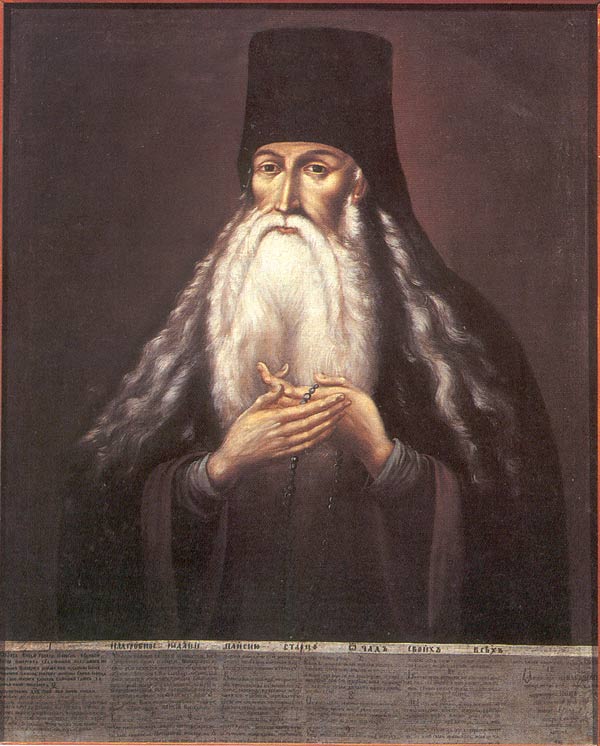
Focus on the Faith
PASCHA by Protopresbyter Alexander Schmemann
Christ is risen!
My belief in Christ does not come from the opportunity given to me to participate since earliest childhood in the paschal celebration. Rather, Pascha is made possible, that unique night fills with light and joy and such victorious power in the greeting "Christ is risen! Truly He is risen!" because my faith itself was born from experience of the living Christ. How and when was it born? I don’t know, I don’t remember. I only know that every time I open the gospel and read about Christ, read his words, read his teaching, I consciously repeat, with all my heart and being, what was said by those who were sent to arrest Christ but who returned to the Pharisees without him: "No man ever spoke like this man" (Jn. 7:46). Therefore what I know first of all is that Christ’s teaching is alive, and that nothing on earth can be compared with it. And this teaching is about him, about eternal life, about victory over death, about a love that conquers and overcomes death. I know as well that in a life where everything seems so difficult and tiresome, the one constant that never changes and never leaves is this inner awareness that Christ is with me. "I will not leave you as orphans, I will come to You" (Jn. 14:18). And he does come and give the feeling of his presence through prayer, through a thrill of soul, through a joy so incomprehensible, yet so very alive, through his mysterious, but again so certain, presence in church during services and in sacraments. This living experience is always growing, this knowledge, this awareness which becomes so obvious that Christ is here and that his word has been fulfilled: whoever loves Me, "I will love him and manifest myself to him Jn. 14:21). And whether I am in a crowd or alone, this certitude of his presence, this power of his word, this joy of faith in him remains with me. This is the only answer and the only proof.
"Why do you seek the living among the dead? Why do you mourn the incorrupt amid corruption?" All Christianity, therefore, is the experience of faith repeated again and again as if for the first time, through its incarnation in rites, words, music, and colors. To the unbeliever, it may indeed seem like a mirage; he hears only words, he sees only incomprehensible ceremonies, and he understands them only outwardly. But for believers, all of this radiates from within, and not as proof of his faith, but as its result, as its life in the world, in the soul, in history. Therefore the darkness and sadness of Holy Friday is for us something real, alive, contemporary; we can cry at the cross and experience everything that took place in that triumph of evil, treachery, cowardice, and betrayal; we can contemplate the life-bearing tomb on Holy Saturday with excitement and hope. And therefore, every year we can celebrate Easter, Pascha, the Resurrection. For Easter is not the remembrance of an event in the past. It is the real encounter in happiness and joy, with him whom our hearts long ago knew and encountered as the life and light of all light. Easter night testifies that Christ is alive and with us, and that we are alive with him. The entire celebration is an invitation to look at the world and life, and to behold the dawning of the mystical day of the Kingdom of light. "Today the scent of Spring begins," sings the church, "and the new creation exults..." It exults in faith, in love and in hope.
This is the day of resurrection,
Let us be illumined by the feast,
Let us embrace each other,
Let us call "brothers" even those that hate us,
And forgive all by the resurrection,
And so let us cry: Christ is risen from the dead,
Trampling down death by death,
And upon those in the tombs bestowing life.
Christ is risen!
From the Fathers
“Pascha, the Pascha of the Lord!” By His Resurrection, the Lord has brought us from death to life, and that Resurrection the “Angels in Heaven sing,” [for they have] seen the light of deified human nature in fore-ordained glory in the person of our Lord and Redeemer, in Whose Image and through the power of Whose Resurrection, all true believers in Him, all who have united with Him with all their souls, are transformed. Glory, O Lord, to Thy Most-glorious Resurrection! The Angels sing, rejoicing together with us and foreseeing the swelling of their ranks. O Lord, make us worthy, to hymn Thee, the Resurrected One, with pure hearts, seeing in Thy Resurrection the cessation of our corruption, the seeds of a new resplendent life and the dawn of coming eternal glory whose forerunner Thou becamest, being resurrected for our sake. The tongues of neither men nor angels are capable of expressing Thy ineffable mercy toward us, O most-gloriously Resurrected Lord!
—-St.Theophan the Recluse
Today the Angels leap with joy and all of the Heavenly Powers rejoice, elated because of the salvation of mankind. If because of the repentance of a single person there is joy in Heaven and earth, moreso is this true because of the salivation of the world. Today did Christ liberate the nature of man from the tyranny of the devil and restored it to its previous nobility. (St. John Chrysostom)
“He says: I was dead, and behold, I am alive for, evermore, amen; and you also will be alive forever. This is the meaning of the words of Him Who arose: I am the first and the last; I am He that liveth and was dead for you,”(Revelation 1:18) for your redemption from death, and I; that is: I conquered your death by My innocent death for your sake, and behold, I am also forever and will sit with My Father on His throne; I was not separated from Him, even though I was on earth accomplishing My great work for you who are subject to sin and death. Therefore, do you also, My followers, work and struggle against sin and do righteous deeds, and where I am, there shall My servant be also–that is, in the eternal Kingdom.”
—St. John of Kronstadt
Now since you are celebrating the holy Pascha, you should know, brethren, what the Pascha is. Pascha means the crossing-over, and so the Festival is called by this name. For it was on this day that the Children of Israel crossed over out of Egypt, and the Son of God crossed over from this world to His Father. What gain is it to celebrate unless you imitate Him Whom you worship; that is, unless you cross over from Egypt, that is, from the darkness of evildoing to the light of virtue, from the love of this world to the love of your heavenly home?” (St. Ambrose of Milan)
It is He, the Suffering One, that delivered us from slavery to liberty, from darkness to light, from death to life, from tyranny to eternal royalty; and made us a new priesthood and an eternal people personal to Him. He is the Pascha of our salvation.”
—St. Melito of Sardis
Orthopraxis
Services of Holy Week and Pascha in the Orthodox Church
The eight days that compromise Holy Week in the Orthodox Church express the spiritual summit of the Church's liturgical life. The focus on the Passion, Death and Resurrection of Christ proceeds in a physically, psychologically and spiritually moving series of services that defy the limitations of space and time to bring the Orthodox Christian into the moment of the events commemorated. The elegant beauty of the services so move the faithful that it is not uncommon to see tears flow as people feel themselves mystically participating in the events of the last week of Jesus' earthly ministry.
Lazarus Saturday (the day before Palm Sunday) recalls the last public miracle of Jesus in raising Lazarus from the dead. This act serves as a reassurance that the Passion Jesus Himself will face in the week ahead will not end in death and corruption. The hymnody emphasizes that Christ is fully human and Divine.
Palm Sunday is a celebration of the Lord's triumphant entry into Jerusalem. The Vigil Service includes a blessing of palm branches, which are held by the faithful for the remainder of the Vigil and throughout the Divine Liturgy. The hymnody reflects both the raising of Lazarus and the humility of the King who enters Jerusalem on the foal of an ass.
The evenings of Sunday, Monday and Tuesday feature the Bridegroom Matins. (Essentially, all the services for the following week are pushed forward twelve hours to allow more active participation of the faithful. Thus the morning service for Monday is celebrated Sunday evening, etc.) These services focus on the End Times. There is an urgency in the tone of the services as, successively, the innocent suffering of the Patriarch Joseph in the Old Testament, the parable of the Ten Virgins, and the anointing by the sinful woman is brought to mind in anticipation of the events to follow. Of particular beauty is the "Hymn of Kassiani" on Tuesday night, in which the faithful identify themselves with the sinful woman, both repentant and grieving at the suffering Jesus will endure for our salvation.
Wednesday Evening is the often occasion for the Sacrament of Holy Unction. More than a blessing of Holy Oil for the sick, the service functions as a transition from the expectation of the Passion to a spiritual participation in the last days of Christ. The focus is on repentance and the assurance of healing (spiritual as well as physical) through the Person of Jesus Christ. All those who are anointed must be Orthodox Christians, must be sick (soul or body), and MUST have been to Confession, in accordance with Bishop's Ukaz (decree.)
NOTE: The Unction Service at St. Nicholas will be served the Thursday before Holy Week this year.
On Holy Thursday morning the Vesperal Liturgy of the Last Supper is celebrated (moved from the evening to the morning as noted above). The Gospel Reading is a masterful combination of readings that recount the Last Supper, institution of the Holy Eucharist, and betrayal, arrest, and condemnation of Jesus. The hymnody centers on betrayal of Judas with allusions to the three Old Testament readings which each focus on the innocence of Jesus as a lamb led to the slaughter.
Thursday evening the Matins of the 12 Passion Gospels is served. The complete Passion narratives of each of the Gospels are read to dramatically tell the story of the Passion and Death of Jesus. During the service, the faithful are spiritually transported into the events being described by the carrying of the Cross. A priest exits the Sanctuary with a large cross, which he carries in procession through the Church. The Cross is placed in the center of the temple. An icon of “The Crucified One” corpus is suspended upon the cross. The sense of terror and despair becomes palpable, and it is not uncommon for people to weep at this point. The service continues with a growing sense of dread and grief as the Gospels recount the Death of Jesus. It is during this service that we hear the moving Hymn of Light “The Wise Thief” as everyone prostrates.
Holy Friday is truly a day of mourning. In the morning the Royal Hoursprovide a meditation on the theme of Christ's sacrifice for us on the Cross. In the afternoon, the Vespers of the Burial of our Lord Jesus Christ occurs. Prophecies, Readings and Hymns again bring the faithful into the midst of events as the story of the Crucifixion is recounted and death of Jesus is affirmed. At the point of the Gospel narrative wherein Jesus is taken down from the Cross, the priest or acolytes exist the Sanctuary and remove the Icon corpus from the cross, wrap it in a white shroud and slowly take it into the Sanctuary. Again, the silence of the moment can prove overwhelming and often tears are seen on the faces of many. As the service proceeds, the priest emerges again, this time carrying the Plaschanitsa or Epitaphios (a large stiff cloth with the icon image of Jesus being laid in the tomb). The procession ends at a Tomb in the midst of the temple -- where the Plaschanitsa is laid out to be reverenced by the faithful.
On Friday Evening, the faithful gather for the Matins of the Lamentations, or "Praises." The Church joins with the Angelic Hosts in mourning the death of the Deathless One. The Plaschanitsa is carried in procession in a funeral cortège around the outside of the Church. The sense of desolation reaches a breaking point, as the faithful reverence the Plaschanitsa, and take a flower to remember Jesus.
Holy Saturday begins with the Vesperal Liturgy of the First Proclamation of the Resurrection. The Resurrection is proclaimed with a strong association drawn to Passover and Baptism. Before the Gospel the priest scatters bay (laurel) leaves and/or rose petals throughout the whole church as a sign of Christ's triumph and victory over death. Traditionally, converts to Orthodoxy are baptized either before or immediately after this service.
The Night of Holy Saturday features the most moving and joyous celebration in the Orthodox Church. The Procession begins with hymns that mount in tension, urging the faithful to watch and wait. The Church grows ever darker until all lights and candles are extinguished. Suddenly, the priest exits the Sanctuary with lighted candles, singing, "Thy resurrection O Christ our Saviour…"" The tension that has been building throughout the week breaks as one by one, candles are lit from the paschal candles, the church suddenly breaking forth into light. Singing the Hymn "Thy Resurrection O Christ our Saviour," all process outside the Church, the doors are closed. The Matins of the Resurrection begins outside the church with jubilant singing of "Christ is Risen" and incensing of the faithful. When the doors are finally opened the Church is resplendent with all lights on and candles burning. The Royal Doors are open (and remain open throughout Bright Week – the period between Pascha and the Sunday of St. Thomas). Matins concludes in an air of joy and celebration. The clergy and faithful continuously shout "Christ is Risen!" "Indeed, He is Risen!" throughout the remainder of the Service. The usual ending of the service is replaced with the singing of Christ is Risen and the celebration of the Resurrectional Divine Liturgy of St. John Chrysostom.
Holy Week in the Orthodox Church is more than attending a series of services, it is a week long experience of the Passion, Death and Resurrection of Jesus Christ. The hymnody, readings, and overall arrangement of the services combine to powerfully witness to the central Truth of our Salvation. Those who faithfully participate in the services truly walk the way of the Cross and experience the joy of the Resurrection.
Upcoming Events
Upcoming events this month are in the online calendar, which you can subscribe to on your phone or tablet. Use the print button on the calendar to print a copy.
Click below to print a copy of this newsletter:




